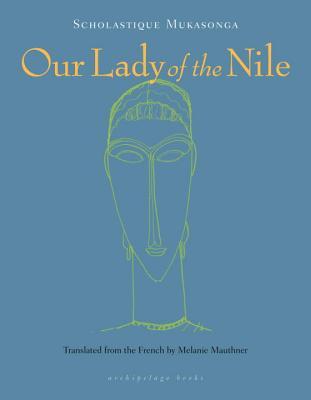Planning a future trip to Rwanda? There are plenty of ways to familiarise yourself with the country and its culture before you visit. Here’s our pick of the best:
To read: Our Lady of the Nile by Scholastique Mukasonga

Given that there is no great tradition of written literature in Rwanda, it’s no great surprise that very little of it has been translated into English. However, readers would do very well to check out Scholastique Mukasonga’s award-winning 2012 novel Our Lady of the Nile (Notre-Dame du Nil), which was first published in English in 2014.
The novel is set in the 1970s in Notre-Dame du Nil, an elite girls’ school which aims to protect its students from the dangers of the outside world. The blurb states that ‘the school soon becomes a fascinating existential microcosm of the true 1970s Rwanda’; the text details ‘friendships, desires, hatred, political fights, incitation to racial violence and persecutions’.
To cook: goat brochettes
While travelling, you will find that local restaurants serve Rwandan favourites such as grilled or fried tilapia (a type of lake fish) and bean or meat stews. Kebabs (brochettes) are also popular, and if you’re looking for a Rwandan dish to cook yourself they’re perfect, as they’re fairly simple and can be whipped up in around half an hour. Darlene, who runs the blog International Cuisine, has shared her recipe for Rwandan goat brochettes; don’t worry if you can’t get hold of the correct meat, it can be substituted with chicken, beef or fish, all of which are traditional variants.
Traditional Rwandan dishes are normally eaten with one of a few staples: ugali (a stiff porridge made with maize meal), matoke (stewed cooking banana/plantain), chapatti (flat bread), and boiled potatoes – not to mention rice and chips.
To experience: gorilla tracking
Tracking mountain gorillas in the Virungas is a peerless wildlife experience, and one of Africa’s indisputable travel highlights. Rwanda is the world’s premier gorilla-tracking destination. It was here, on the southern slopes of the Virungas, that the late Dian Fossey studied gorilla behaviour for almost 20 years, and on these very same bamboo-covered slopes that the acclaimed movie Gorillas in the Mist was shot in 1988.
It is difficult to describe the simple exhilaration attached to first setting eyes on a wild mountain gorilla, but virtual reality may help prepare you for what you will experience in the country. In 2020 the Rwanda Development Board partnered with The Ellen Fund, Dian Fossey Gorilla Fund and Habitat XR to create and launch a VR tour of the gorillas of Volcanoes National Park – the video can be downloaded here. If you don’t have a VR headset, check out the above video to join YouTuber the Luxury Travel Expert on a trek.
To learn: traditional dance
Dance is as instinctive as music in Rwanda and its roots stretch back through the centuries. Best known today are the Intore dancers, who perform both nationally and internationally. Traditionally their performances consisted mainly of warlike dances, such as the ikuma (lance), umeheto (bow) and ingabo (shield), in which they carried authentic weapons (these have now been substituted with dummies).
Although the most famous, Intore is just one of Rwanda’s many dance styles. If you would like to learn more about the different styles, and give them a go for yourself, YouTuber theoisback has a series of tutorials designed for beginners.
To listen to: Rwandan pop music
Music is of great importance to all Rwandans. Traditionally, Tutsi songs praised excellence and valour; Hutu songs were lighter, sometimes humorous and linked to social occasions; Twa songs related more directly to aspects of their original occupation, hunting. Today, there’s a whole crop of new artists in town, and a few older ones as well. Vocalist Cecile Kayirebwa is among the most famous names in Rwandan music, and her retrospectively wistful 1994 album of traditional songs Rwanda is her best-known work, but she’s been recording and performing ever since.
Orchestre Impala, despite having lost all but two of the band’s members during the genocide, has even re-formed in recent years to play some dates with younger musicians. Closer to the crest of the Rwandan pop wave, the hits of today lean decidedly towards R&B and hip-hop, often with something of a reggae-zouk twist, and young people around the country are sure to have some combination of Kigali’s coolest acts like Urban Boyz, Riderman, Butera Knowless, King James, Meddy, and Tom Close on their mobiles.
To create: imigongo patterns
The east of Rwanda, specifically the area around Rusumo, is noted for its distinctive imigongo (cow-dung) ‘paintings’ – earthy, geometric designs which are mostly used to decorate the interiors of houses. These paintings make for great souvenirs, and it’s evident that their striking designs have influenced other aspects of Rwandan culture – the patterns often appear on locally made clothing and jewellery.
If you’d like to learn more about the history of imigongo and how these paintings are made, the above video by Contact Makeda is well worth a watch. And while you may not have access to cow dung, why not grab some pens and have a go at drawing your own patterns?
More information
Ready to plan a future trip to Rwanda? Check out our guide for more information:
Lead image © Ryan M. Bolton, Shutterstock